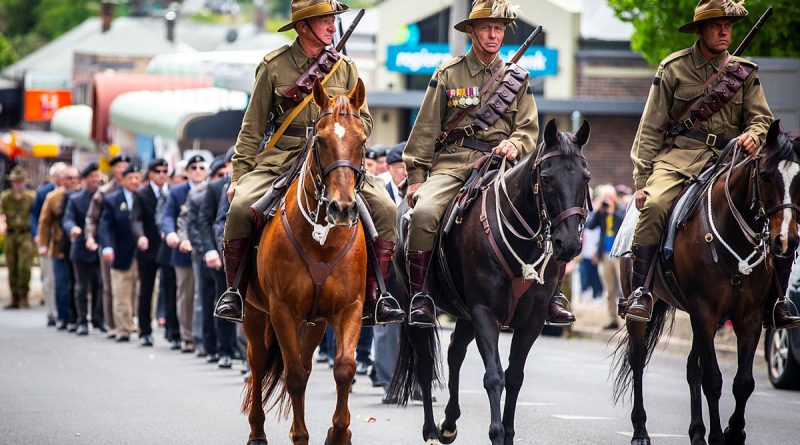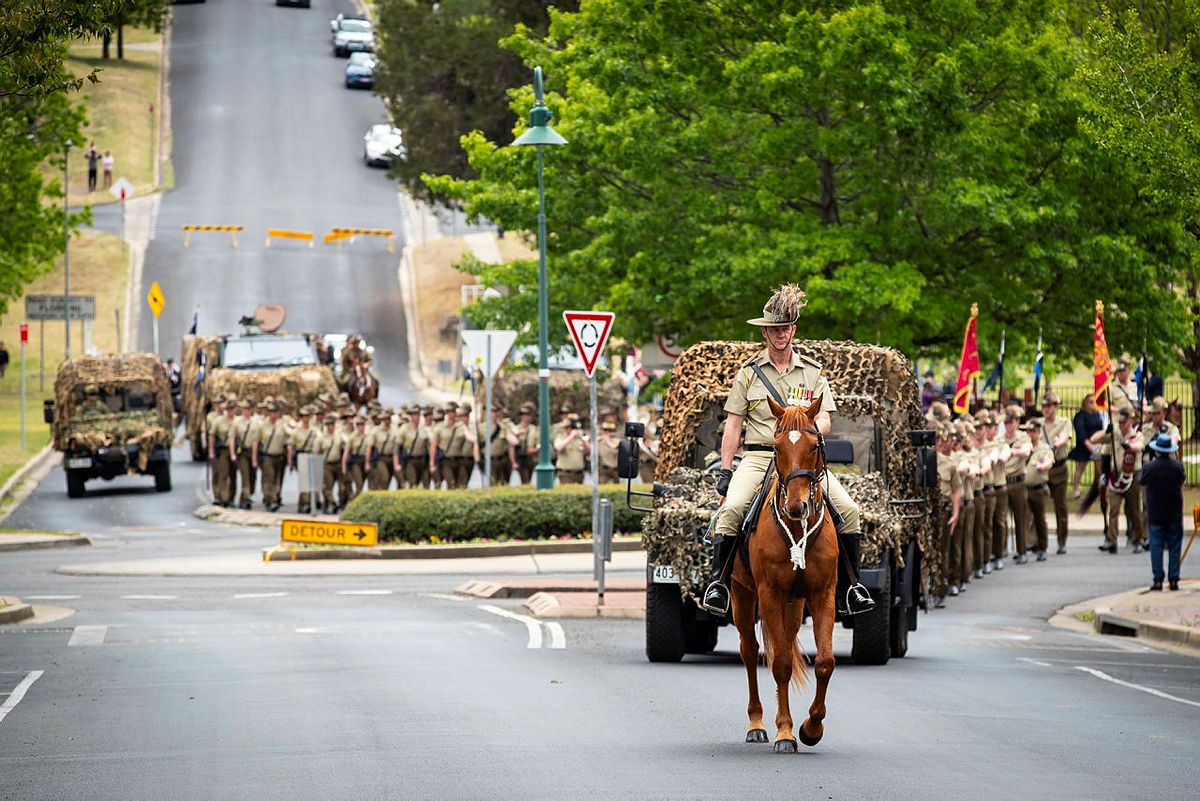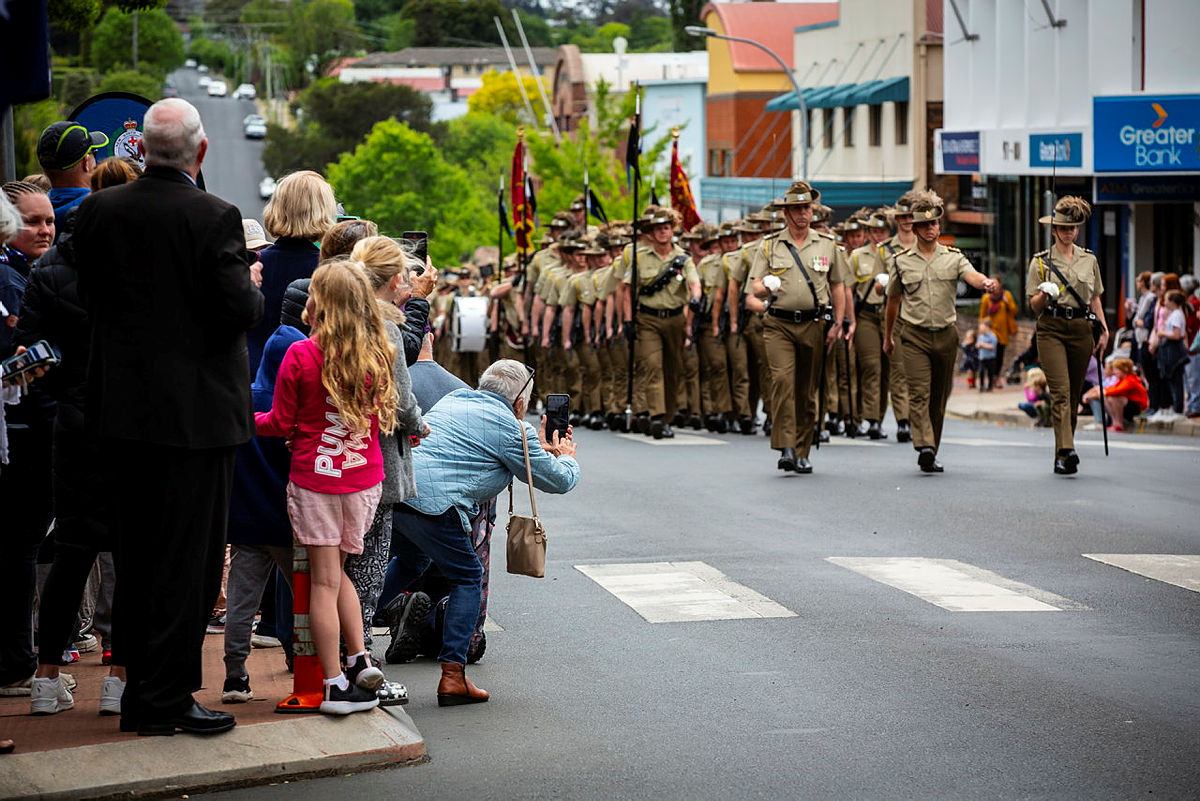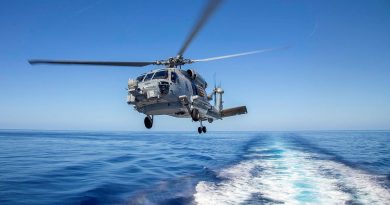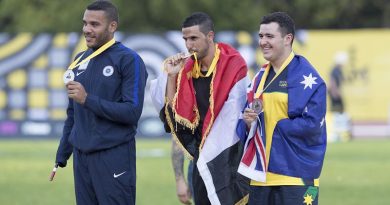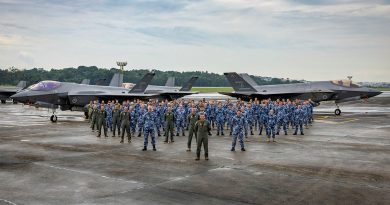Freedom-of-entry parade marks 75 years

“Who goes there!?” challenged Commander New England Police District, Superintendent Steve Laksa, with his hand raised.
CAPTION: 1 Light Horse Re-Enactment Troop, followed by the 12/16 Hunter River Lancers and 12 Light Horse Association march through the Armidale city centre at the freedom-of-entry parade. Story and photos by Corporal Melina Young.
Mounted on horseback, Commanding Officer 12/16 Hunter River Lancers Lieutenant Colonel Ian McNab halted the regiment.
“The officers and soldiers of the 12/16 Hunter River Lancers exercising their right and privilege to march through the city of Armidale with swords drawn, band playing and guidons flying,” he replied.
The scroll-bearer marched out and presented the document, then, with a nod of acceptance and a round of applause, the regiment exercised its right to the freedom of entry to mark the 75th anniversary of its formation.
Lieutenant Colonel McNab led more than 100 officers and soldiers, flanked by military vehicles, 1 Light Horse Re-Enactment Troop, the Hunter River Lancers Association, and the 251 Army Cadet Unit down the main street of the city in a well-worn tradition on October 28.
The soldiers and officers did not miss a beat on the day that started in Curtis Park with a handover-takeover ceremony, where the regiment’s guidons were uncased and marched on parade.
The Light Horse Troop provided the horses, Maverick and China, and in the lead-up to the ceremony they practised the drill with the regiment around drums, vehicle traffic, shouting commands and flags flapping.
“It’s quite sombre remembering those who did not return from war, and those who were injured. I’m proud of the service of both our former and current serving members,” Lieutenant Colonel McNab said.
CAPTION: Australian Army Commanding Officer 12/16 Hunter River Lancers Lieutenant Colonel Ian McNab leads the regiment through the city of Armidale, NSW, during the freedom-of-entry parade.
Regimental Sergeant Major of 12/16 Hunter River Lancers Warrant Officer Class One (WO1) Grant McDowell was pleased to see the regiment together in the same location after a lengthy time apart.
“To parade through Armidale with such short training and rehearsals, and seeing the outcome and the hard work and dedication the regiment put in over three days makes me very proud,” WO1 McDowell said.
“It was also a very rare and special opportunity to be able to ride with my commanding officer on horseback. It felt very surreal.”
Superintendent Laksa said he felt nervous during the challenge ceremony.
“The hairs stood up on my arms. It was very daunting halting the regiment, but I felt privileged to be part of a ceremony that marks a time in history,” he said.
“We are often only seen when there is doom and gloom and trauma, so it was great to be at a heartfelt occasion and connect with the community and the ADF.”
Flanked between the two squadrons was the 1/15 Royal NSW Lancers Band, which advanced the parade towards the council chambers where a welcome to country was performed.
Host officer Honorary Colonel Major General Roger Nobel addressed the crowd, speaking of the depth of commitment from the regiment’s distinguished service, of its people, and thanked the city of Armidale.
“Freedom of entry is not easily earned and I believe this regiment has, so I thanked Armidale for making it easy so we didn’t have to charge like the 12 Light Horse charged at Beersheba,” Major General Nobel said.
Mayor of Armidale Councillor Sam Coupland was invited to inspect the regiment and address the parade, which later continued the march to Central Park.
The regiment’s lineage can be traced back to the pre-Federation 1 Australian Horse ‘D’ and ‘E’ Squadrons raised in 1897, the NSW Lancers and the NSW Mounted Rifles. Its battle honours include the South African War and WW1, including Gallipoli, Egypt, Beersheba and Palestine.
Between the two World Wars, the three regiments were mobilised as armoured car and motor regiments, and disbanded in 1943.
Reformed in 1948, soldiers from the regiment have gone on to support operations in Cyprus, East Timor, Bougainville, Iraq, the Solomon Islands, Sinai, Lebanon, Afghanistan, South Sudan and the Philippines.
Domestically, soldiers have supported maritime border protection and security operations, including the Sydney Olympic Games.
More recently, soldiers have supported domestic emergencies during COVID-19 and natural disasters, bushfire and flood recovery.
The Armidale Regional Council originally granted the regiment freedom of entry in 1986.
CAPTION: Australian Army soldiers of the 12/16 Hunter River Lancers march through the city streets of Armidale during the freedom-of-entry parade.
.
.

.
.

